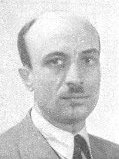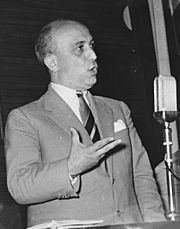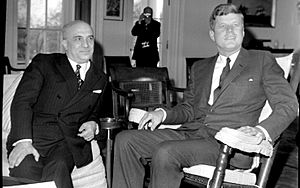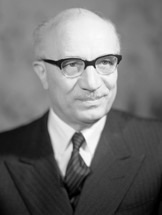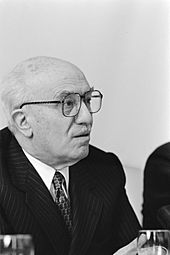Amintore Fanfani facts for kids
Quick facts for kids
Senator for life
Amintore Fanfani
|
|||||||||||||||||||||||||||||||||||||||||||||||||||||||||||||||||||||||||||||||
|---|---|---|---|---|---|---|---|---|---|---|---|---|---|---|---|---|---|---|---|---|---|---|---|---|---|---|---|---|---|---|---|---|---|---|---|---|---|---|---|---|---|---|---|---|---|---|---|---|---|---|---|---|---|---|---|---|---|---|---|---|---|---|---|---|---|---|---|---|---|---|---|---|---|---|---|---|---|---|---|
 |
|||||||||||||||||||||||||||||||||||||||||||||||||||||||||||||||||||||||||||||||
| Prime Minister of Italy | |||||||||||||||||||||||||||||||||||||||||||||||||||||||||||||||||||||||||||||||
| In office 18 April 1987 – 29 July 1987 |
|||||||||||||||||||||||||||||||||||||||||||||||||||||||||||||||||||||||||||||||
| President | Francesco Cossiga | ||||||||||||||||||||||||||||||||||||||||||||||||||||||||||||||||||||||||||||||
| Preceded by | Bettino Craxi | ||||||||||||||||||||||||||||||||||||||||||||||||||||||||||||||||||||||||||||||
| Succeeded by | Giovanni Goria | ||||||||||||||||||||||||||||||||||||||||||||||||||||||||||||||||||||||||||||||
| In office 1 December 1982 – 4 August 1983 |
|||||||||||||||||||||||||||||||||||||||||||||||||||||||||||||||||||||||||||||||
| President | Sandro Pertini | ||||||||||||||||||||||||||||||||||||||||||||||||||||||||||||||||||||||||||||||
| Preceded by | Giovanni Spadolini | ||||||||||||||||||||||||||||||||||||||||||||||||||||||||||||||||||||||||||||||
| Succeeded by | Bettino Craxi | ||||||||||||||||||||||||||||||||||||||||||||||||||||||||||||||||||||||||||||||
| In office 27 July 1960 – 22 June 1963 |
|||||||||||||||||||||||||||||||||||||||||||||||||||||||||||||||||||||||||||||||
| President | Giovanni Gronchi Antonio Segni |
||||||||||||||||||||||||||||||||||||||||||||||||||||||||||||||||||||||||||||||
| Deputy | Attilio Piccioni | ||||||||||||||||||||||||||||||||||||||||||||||||||||||||||||||||||||||||||||||
| Preceded by | Fernando Tambroni | ||||||||||||||||||||||||||||||||||||||||||||||||||||||||||||||||||||||||||||||
| Succeeded by | Giovanni Leone | ||||||||||||||||||||||||||||||||||||||||||||||||||||||||||||||||||||||||||||||
| In office 2 July 1958 – 16 February 1959 |
|||||||||||||||||||||||||||||||||||||||||||||||||||||||||||||||||||||||||||||||
| President | Giovanni Gronchi | ||||||||||||||||||||||||||||||||||||||||||||||||||||||||||||||||||||||||||||||
| Deputy | Antonio Segni | ||||||||||||||||||||||||||||||||||||||||||||||||||||||||||||||||||||||||||||||
| Preceded by | Adone Zoli | ||||||||||||||||||||||||||||||||||||||||||||||||||||||||||||||||||||||||||||||
| Succeeded by | Antonio Segni | ||||||||||||||||||||||||||||||||||||||||||||||||||||||||||||||||||||||||||||||
| In office 19 January 1954 – 10 February 1954 |
|||||||||||||||||||||||||||||||||||||||||||||||||||||||||||||||||||||||||||||||
| President | Luigi Einaudi | ||||||||||||||||||||||||||||||||||||||||||||||||||||||||||||||||||||||||||||||
| Preceded by | Giuseppe Pella | ||||||||||||||||||||||||||||||||||||||||||||||||||||||||||||||||||||||||||||||
| Succeeded by | Mario Scelba | ||||||||||||||||||||||||||||||||||||||||||||||||||||||||||||||||||||||||||||||
| Acting President of Italy | |||||||||||||||||||||||||||||||||||||||||||||||||||||||||||||||||||||||||||||||
| In office 15 June 1978 – 9 July 1978 |
|||||||||||||||||||||||||||||||||||||||||||||||||||||||||||||||||||||||||||||||
| Prime Minister | Giulio Andreotti | ||||||||||||||||||||||||||||||||||||||||||||||||||||||||||||||||||||||||||||||
| Preceded by | Giovanni Leone | ||||||||||||||||||||||||||||||||||||||||||||||||||||||||||||||||||||||||||||||
| Succeeded by | Sandro Pertini | ||||||||||||||||||||||||||||||||||||||||||||||||||||||||||||||||||||||||||||||
| President of the Italian Senate | |||||||||||||||||||||||||||||||||||||||||||||||||||||||||||||||||||||||||||||||
| In office 9 July 1985 – 17 April 1987 |
|||||||||||||||||||||||||||||||||||||||||||||||||||||||||||||||||||||||||||||||
| Preceded by | Francesco Cossiga | ||||||||||||||||||||||||||||||||||||||||||||||||||||||||||||||||||||||||||||||
| Succeeded by | Giovanni Malagodi | ||||||||||||||||||||||||||||||||||||||||||||||||||||||||||||||||||||||||||||||
| In office 5 July 1976 – 1 December 1982 |
|||||||||||||||||||||||||||||||||||||||||||||||||||||||||||||||||||||||||||||||
| Preceded by | Giovanni Spagnolli | ||||||||||||||||||||||||||||||||||||||||||||||||||||||||||||||||||||||||||||||
| Succeeded by | Tommaso Morlino | ||||||||||||||||||||||||||||||||||||||||||||||||||||||||||||||||||||||||||||||
| In office 5 June 1968 – 26 June 1973 |
|||||||||||||||||||||||||||||||||||||||||||||||||||||||||||||||||||||||||||||||
| Preceded by | Ennio Zelioli-Lanzini | ||||||||||||||||||||||||||||||||||||||||||||||||||||||||||||||||||||||||||||||
| Succeeded by | Giovanni Spagnolli | ||||||||||||||||||||||||||||||||||||||||||||||||||||||||||||||||||||||||||||||
|
|||||||||||||||||||||||||||||||||||||||||||||||||||||||||||||||||||||||||||||||
|
|||||||||||||||||||||||||||||||||||||||||||||||||||||||||||||||||||||||||||||||
|
|||||||||||||||||||||||||||||||||||||||||||||||||||||||||||||||||||||||||||||||
| Personal details | |||||||||||||||||||||||||||||||||||||||||||||||||||||||||||||||||||||||||||||||
| Born | 6 February 1908 Pieve Santo Stefano, Tuscany, Kingdom of Italy |
||||||||||||||||||||||||||||||||||||||||||||||||||||||||||||||||||||||||||||||
| Died | 20 November 1999 (aged 91) Rome, Lazio, Italy |
||||||||||||||||||||||||||||||||||||||||||||||||||||||||||||||||||||||||||||||
| Political party | National Fascist Party (1935–1943) Christian Democracy (1943–1994) Italian People's Party (1994–1999) |
||||||||||||||||||||||||||||||||||||||||||||||||||||||||||||||||||||||||||||||
| Spouses |
Biancarosa Provasoli
(m. 1939; Maria Pia Tavazzani
(m. 1975) |
||||||||||||||||||||||||||||||||||||||||||||||||||||||||||||||||||||||||||||||
| Children | 7 | ||||||||||||||||||||||||||||||||||||||||||||||||||||||||||||||||||||||||||||||
| Alma mater | Catholic University of the Sacred Heart | ||||||||||||||||||||||||||||||||||||||||||||||||||||||||||||||||||||||||||||||
| Occupation | |||||||||||||||||||||||||||||||||||||||||||||||||||||||||||||||||||||||||||||||
Amintore Fanfani (born February 6, 1908 – died November 20, 1999) was an important politician and statesman from Italy. He served as the Prime Minister of Italy five different times. He was one of the most famous Italian politicians after World War II.
Fanfani was a key figure in the left-leaning part of the Christian Democracy party. He helped create the modern centre-left political group in Italy. He was known for working with the Italian Socialist Party. This led to big changes like making the electricity company, Enel, state-owned. He also helped extend compulsory education and create a fairer tax system.
He held many important jobs in the government, like Minister of the Interior (in charge of internal security) and Minister of Foreign Affairs (dealing with other countries). He was also the President of the Italian Senate three times. In 1972, he was made a senator for life.
Fanfani was sometimes called Cavallo di Razza ("Purebred Horse"). This nickname showed his natural talent for politics. However, some people called him "Pony" because he was small.
Contents
Early Life and Education
Amintore Fanfani was born in Pieve Santo Stefano, a town in Tuscany, Italy. He came from a middle-class family. His father was a lawyer and notary, and his mother was a homemaker. Amintore was the first of nine children. His family was very Catholic.
When he was 12, Fanfani joined Catholic Action, a Catholic youth group. He became a local leader there. In 1930, he finished his studies at the Catholic University in Milan. He studied political and economic sciences.
He wrote important books about how religion affected the growth of Capitalism during the Renaissance and Reformation. His book, Catholicism, Capitalism and Protestantism, was published in 1935.
During the Fascist Era
During the time of Benito Mussolini's rule, Fanfani joined the National Fascist Party. He supported ideas that promoted cooperation between different social classes. He believed that Europe might one day be led by Italy and Germany under authoritarian governments.
He also wrote for a magazine called The Defence of the Race, which promoted racial ideas. In 1938, he signed a document called the Manifesto of Race. This led to laws that took away jobs from Italian Jews in the government, universities, and other professions. Fanfani later admitted that his actions during this period were wrong.
In 1939, Fanfani married Biancarosa Provasoli. They had seven children together. During World War II, after Italy surrendered in 1943, Fanfani went to Switzerland. There, he helped organize university courses for Italian refugees.
Starting a Political Career
After returning to Italy, Fanfani joined the new Christian Democracy party. He was one of the youngest party leaders. He was a close supporter of Alcide De Gasperi, who was the party's main leader for many years.
Fanfani believed that private businesses were good only if they helped everyone. He thought there was a big difference between Catholic beliefs and the ideas of capitalism.
In the 1946 election, he was chosen to be part of the group that wrote Italy's new Republican Constitution. The first article of the new constitution, which says "Italy is a democratic republic founded on labor," showed Fanfani's ideas. In 1948, he was elected to the Italian Chamber of Deputies.
Ministerial Roles
Under Prime Minister De Gasperi, Fanfani held several important government jobs:
- From 1947 to 1950, he was the Minister of Labour. He started a program called "Fanfani house" to build homes for workers. He also put many unemployed people to work planting trees.
- From 1951 to 1953, he was the Minister of Agriculture. He helped start the Christian Democrats' plan to reform land ownership.
- From 1953 to 1954, he was the Minister of the Interior.
He was known for working very hard and needing little sleep.
Leading the Party and Becoming Prime Minister
First Time as Prime Minister
In January 1954, Giuseppe Pella, the Prime Minister, had to resign. President Luigi Einaudi then asked Fanfani to become the new head of government. Fanfani formed a government made only of members from his Christian Democracy party.
However, this government lasted only 23 days because it did not get enough votes in Parliament. It was the shortest government in the history of the Italian Republic. After this, Mario Scelba became the new prime minister.
Leading the Christian Democracy Party
After De Gasperi retired in 1953, Fanfani became the most likely person to take over. In June 1954, he was chosen as the party secretary, a job he held until 1959.
As secretary, he made the Christian Democrats' party organization stronger and more modern. He also became good friends with Enrico Mattei, the head of the energy company Eni.
However, some people in his party did not trust him. They thought he was too strong-willed and wanted the government to control too much of the economy.
In 1955, when it was time to choose a new President of Italy, Fanfani supported Cesare Merzagora. But other members of his party, with help from the Italian Communist Party and Italian Socialist Party, helped Giovanni Gronchi get elected instead.
Fanfani also built good relationships with the United States. He visited Washington, D.C. in 1956. After the Hungarian Revolution of 1956, he helped lead a strong campaign against communism in Italy.
Second Time as Prime Minister
In the 1958 election, Fanfani led the Christian Democrats. His party won 42.4% of the votes. However, the results still made it hard to form a stable government.
On July 2, 1958, Fanfani became Prime Minister again. He led a government with the Italian Democratic Socialist Party (PSDI). He also got support from the Italian Republican Party (PRI) for specific issues.
He started an active foreign policy, trying to make Italy more independent from the United States. He wanted Italy to be a main power in the Mediterranean Sea. He also tried to build closer ties with Arab countries.
However, his government did not last long. Some Christian Democrats voted against him, and he had to resign in January 1959, after only six months. In March 1959, he also resigned as party secretary.
Third and Fourth Times as Prime Minister
On July 26, 1960, Fanfani became Prime Minister for the third time. This time, his government was openly centre-left. It was supported by the Italian Socialist Party (PSI), who agreed not to vote against him.
In February 1962, Fanfani changed his government and got more support from the socialist leader Pietro Nenni. During this time, Fanfani made many important changes:
- He introduced laws to control building areas and prevent high prices.
- In December 1962, a law was passed that made compulsory education last until age 14. It also created a single, unified school curriculum.
- He introduced extra pension payments and child support for pensioners.
- He created a voluntary pension insurance plan for homemakers.
- He improved health benefits for farm workers.
One of his biggest achievements was making Enel, the national electric company, state-owned. He also introduced taxes on company shares.
Fanfani also became good friends with U.S. President John F. Kennedy. They met in 1963 at the White House. Some say Fanfani helped find a peaceful solution during the Cuban Missile Crisis.
1963 Election and Resignation
In the 1963 election, the Christian Democrats lost some votes. Many people who were against Fanfani's centre-left policies voted for other parties.
Because of this, on June 22, 1963, Fanfani was replaced by a temporary government. Later, Aldo Moro, the new secretary of the Christian Democracy party, became the new prime minister.
Minister and President of the Senate
In August 1964, President Antonio Segni had to resign due to health issues. Fanfani tried to become president, but he was not elected.
In March 1965, Fanfani became Minister of Foreign Affairs. He strongly supported European integration and wanted to make the European Economic Community (EEC) stronger. He also spoke out against U.S. bombings during the Vietnam War. He continued his policy of building closer ties with Arab countries and tried to connect with China.
From 1965 to 1966, he was the President of the United Nations General Assembly, which is a very important international role. He was the only Italian to hold this position.
In the 1968 election, Fanfani was elected to the Senate. On June 5, 1968, he was chosen as the President of the Senate. He held this job until 1973.
In 1968, his wife, Biancarosa, passed away.

In 1971, Fanfani was again suggested as a candidate for President of Italy. But he faced strong opposition and was not elected. On March 10, 1972, he was appointed Senator for life.
Second Term as Party Secretary
In June 1973, Fanfani was elected secretary of the Christian Democracy party for a second time. He led the campaign for a referendum in 1974. This vote was about whether to keep or remove a law that allowed divorce.
Fanfani and his party wanted to make divorce illegal again. They argued for traditional family values. However, most left-wing parties wanted to keep the divorce law. Despite Fanfani's efforts, the "no" side (who wanted to keep divorce legal) won with 59.3% of the votes.
This defeat led to his resignation as party secretary in July 1975. The new secretary, Benigno Zaccagnini, wanted to work with the Communist Party. Fanfani and others tried to make Zaccagnini resign, but they failed.
In 1975, Fanfani married his second wife, Maria Pia Tavazzani.
On July 5, 1976, Fanfani was elected President of the Senate for a second time. He held this role until 1982. During this period, he took on a more calm and less active political role.
The Kidnapping of Aldo Moro
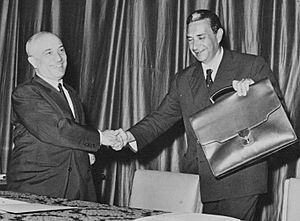
In March 1978, Aldo Moro, a former Prime Minister and a friend and rival of Fanfani, was kidnapped by a terrorist group called the Red Brigades. This was a very difficult time for Italy.
During the kidnapping, Fanfani was open to the idea of talking with the terrorists, unlike some other leaders. Sadly, Moro was killed by the Red Brigades in May 1978. Fanfani was the only Christian Democratic leader allowed by Moro's family to attend the funeral.
Last Times as Prime Minister
In November 1982, the Prime Minister, Giovanni Spadolini, resigned. Fanfani, who was still President of the Senate, was asked to form a new government. He became Prime Minister again on December 1, 1982. This government included members from his party, the Socialists, Social Democrats, and Liberals.
Fanfani resigned on April 29, 1983, when the Socialist Party withdrew its support. This led to new elections.
In the 1983 election, the Christian Democrats lost a lot of votes. On August 4, 1983, the socialist leader Bettino Craxi became the new prime minister. Fanfani's party leader, Ciriaco De Mita, blamed Fanfani for the election loss.
In 1985, Francesco Cossiga was elected President of Italy. On July 9, 1985, Fanfani was re-elected President of the Senate for a third time.
In April 1987, Craxi's government fell. Fanfani became Prime Minister for the sixth time. This government was made only of Christian Democrats and some independent ministers. However, it did not get enough support in Parliament. Fanfani resigned after only 11 days. He stayed in office until July 29, 1987, when Giovanni Goria formed a new government after an election.
Later Political Life
In Goria's government, Fanfani was appointed Minister of the Interior. However, this government also fell in April 1988.
Ciriaco De Mita became the new prime minister, and Fanfani became Minister of Budget and Economic Planning. But problems between the Christian Democrats and Socialists continued, and De Mita had to resign in July 1989.
In 1992, Fanfani was chosen to lead the Foreign Affairs Committee in the Senate. He held this job until 1994. In 1994, he supported the end of the Christian Democracy party, which was affected by a big corruption scandal. He then supported the creation of the Italian People's Party.
Death and Legacy

Amintore Fanfani died in Rome on November 20, 1999, at the age of 91.
Fanfani is still a debated figure in Italian politics. His supporters praise his plans for change and his efforts to work with socialists. They see him as one of the main founders of the modern centre-left in Italy.
However, critics say his political style was too controlling. This might have been why he lost some of his power over time. He always believed in a "corporate state," where different groups in society work together. He admitted that his past involvement with Fascism was a mistake.
Fanfani held almost every important political job in Italy. However, he never achieved his biggest dream: becoming the President of the Republic.
Images for kids
See Also
 In Spanish: Amintore Fanfani para niños
In Spanish: Amintore Fanfani para niños


